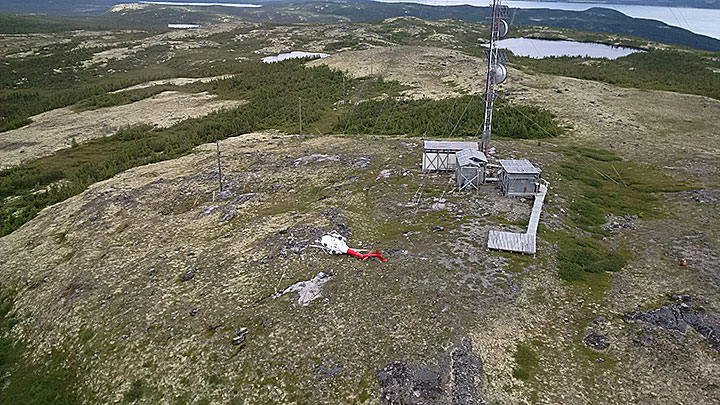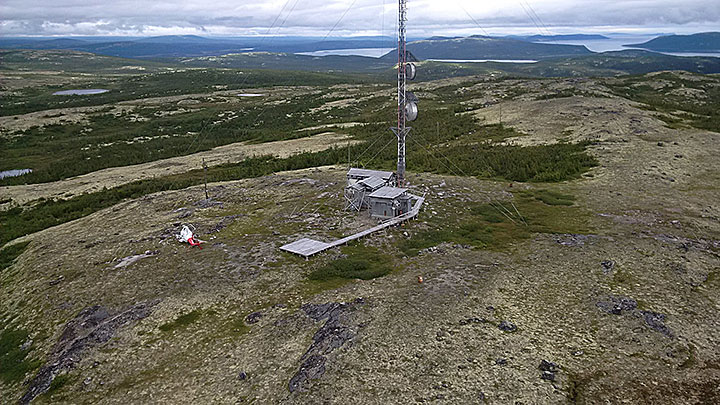Collision with wires
Canadian Helicopters Limited
Airbus Helicopters AS 350 BA (Helicopter), C-GBPS
Rigolet, Newfoundland and Labrador, 5 nm WSW
The occurrence
On 30 July 2015, the Canadian Helicopters Limited Airbus Helicopters AS 350 BA helicopter (registration C-GBPS, serial number 1277) had been flown to a remote microwave tower site approximately 5 nautical miles west-southwest of Rigolet, Newfoundland and Labrador, with a pilot and 2 passengers on board. At about 1609 Atlantic Daylight Time, the helicopter lifted off from the helipad at the tower site and struck a tower guy wire with the main rotor. The helicopter struck the ground and settled on its upper right side. One passenger sustained fatal injuries, the pilot sustained serious injuries, and the other passenger sustained minor injuries. The helicopter was destroyed. The 406-megahertz emergency locator transmitter did not activate. There was no post-crash fire. The accident occurred during daylight hours.
Media materials
News release
Degraded situational awareness led to July 2015 fatal helicopter accident near Rigolet, Newfoundland and Labrador
Read the news release
Deployment notice
TSB deploys a team to the site of a helicopter accident west of Rigolet, Newfoundland and Labrador
Dartmouth, Nova Scotia, 31 July 2015 - The Transportation Safety Board of Canada (TSB) is deploying a team of investigators to the site of a helicopter accident west of Rigolet, Newfoundland and Labrador involving a Canadian Helicopters AS 350 BA. The TSB will gather information and assess the occurrence.
Investigation information
Download high-resolution photos from the TSB Flickr page.
Class of investigation
This is a class 3 investigation. These investigations analyze a small number of safety issues, and may result in recommendations. Class 3 investigations are generally completed within 450 days. For more information, see the Policy on Occurrence Classification.
TSB investigation process
There are 3 phases to a TSB investigation
- Field phase: a team of investigators examines the occurrence site and wreckage, interviews witnesses and collects pertinent information.
- Examination and analysis phase: the TSB reviews pertinent records, tests components of the wreckage in the lab, determines the sequence of events and identifies safety deficiencies. When safety deficiencies are suspected or confirmed, the TSB advises the appropriate authority without waiting until publication of the final report.
- Report phase: a confidential draft report is approved by the Board and sent to persons and corporations who are directly concerned by the report. They then have the opportunity to dispute or correct information they believe to be incorrect. The Board considers all representations before approving the final report, which is subsequently released to the public.
For more information, see our Investigation process page.
The TSB is an independent agency that investigates air, marine, pipeline, and rail transportation occurrences. Its sole aim is the advancement of transportation safety. It is not the function of the Board to assign fault or determine civil or criminal liability.

